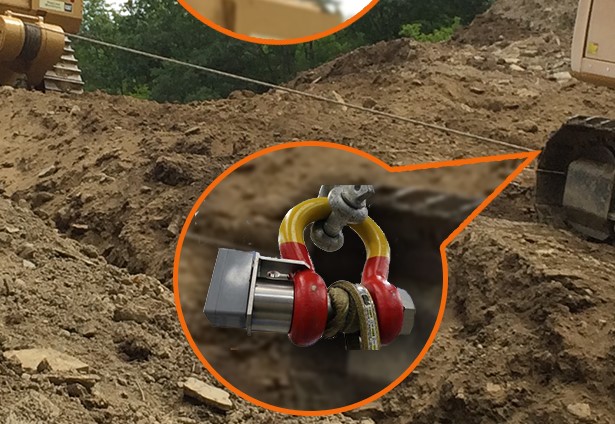Stop "BEFORE" it Breaks
Posted by Dan Ekstrom - Winch Expert on Apr 27th 2020
Nearly every other winch used in hoists, cranes, or marine applications comes with a load monitoring system or has an aftermarket load monitoring option. The outlier is “winches” on the back of dozers. These Dozer winches on the back of crawlers like CAT, Deere, and Komatsu are rated up to their maximum line pull. They are not rated with a 3:1 or 4:1 safety factor. When you rate something up to the “maximum” line pull that means a:
- A PTO winch is rated up to the maximum capacity of it’s weakest link (normally the wire rope)
- A Hydraulic winch is normally limited to the available power to the hydraulic motor on the winch.
CAT winches on Dozers like the CAT D6N, CAT D6T, CAT D8T, and the earlier generations of these sizes are equipped with torque converters that drive the PTO. This translates to a huge power transfer from the engine to a PTO winch. If you are using the slow speed gear ratio winches like the CARCO 70A, CAT PA56, Allied W5C, W6G, W6F, W8L, or W12E these have huge line pull ratings. Take a look at your spec sheets for these models with slow speed ratios, and you’ll see that all the maximum line pulls full drum and bare drum are the same as the maximum breaking strength of the largest wire rope the drum can accept. Usually, these maximum line-pull ratings for dozer winches exceed the operating weight of the dozers, but in extreme applications, the dozers will get anchored. Anchoring the crawler by turning the dozer into a buried dead-man, spinning the tracks down, or securing the dozer to more heavy equipment increases the load on the winch incredibly. limited by the breaking strength of the wire rope, but there are no clear indicators for the operator that you are getting close to that max line pull. In these extreme applications knowing how much weight you are pulling is key to avoiding winch damages. Using a load monitoring system like the Smart Shackle can give the operator the information they need to keep the winch inside operating parameters. Shock loading on the line will still cause a spike in load which can damage the gears which require training. Putting the knowledge in the cab to avoid major breakdowns can be key to your success in the field. Knowing your load on a winch line can prevent downtime like broken wire ropes, damaged gears, and all the associated costs with field repairs.
All the new Deere, Komatsu, and Case Dozers are no longer equipped with traditional torque converter drive PTO shafts to run a winch. The hydrostatic drive type tractors with an optional PTO are usually equipped with direct drive PTO’s on the end of the hydraulic stack. These direct drive PTO’s don’t have the high power transfer that comes with a torque converter drive PTO that the CAT machines have. For this reason, hydraulic drive winches like the Carco H50, H85, H110, H140, H200, Allied H5C, H6H, H8L, and H12E are often a better choice. (possibly the only choice). When properly equipped, hydraulic winches can out pull some PTO winches if the tractor is equipped with high performance or winch ready hydraulics. Hydraulic winches rarely have enough power to snap a wire rope like you can with a PTO winch. One of the best things about a hydraulic winch is the built-in safety that the hydraulic motor has a limited amount of torque and if you ask for more power than the winch has the hydraulics simply go into relief. This tells the operator he has too much load and needs to make an adjustment. A load monitoring system, in this case, is not as important for preventing damage. The load monitoring system will tell you if the winch is performing the way it should. Over time the hydraulics of the dozer and winch can start to wear out, and a load monitor will tell you if your winch is still performing the way it was made, or if you need to have components like the hydraulic motor rebuilt.
For regular dozer winch operations knowing your load doesn’t matter, but in extreme applications, it can be the key to success for failure. I’ve seen tile plow operators pulling huge tile machines dragging deep through the dirt and grenade winches do bad they were no longer cost-effective to repair. I’ve seen pipeline contractors bend the frame of winches and explode huge drum bearings. I’ve seen winch drums split in half by railroad recovery contractors. Sometimes the extreme need on these jobs requires pushing winches to, and beyond, the limit. We believe that in some cases a load monitoring Smart Shackle could have saved contractors in all of these industries a lot of money.


